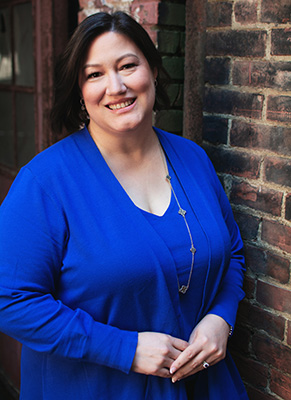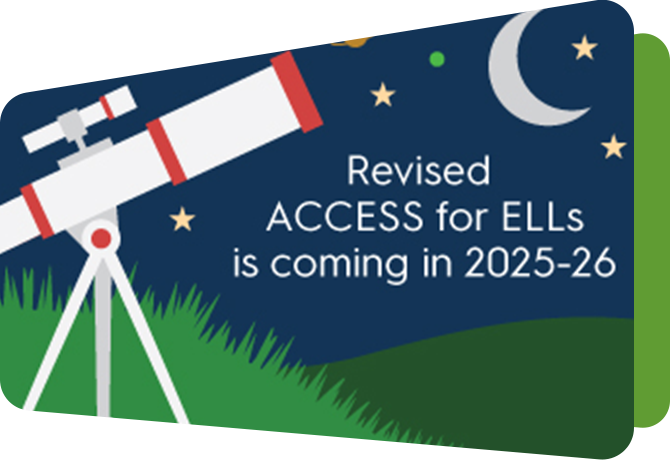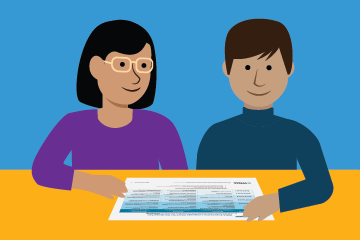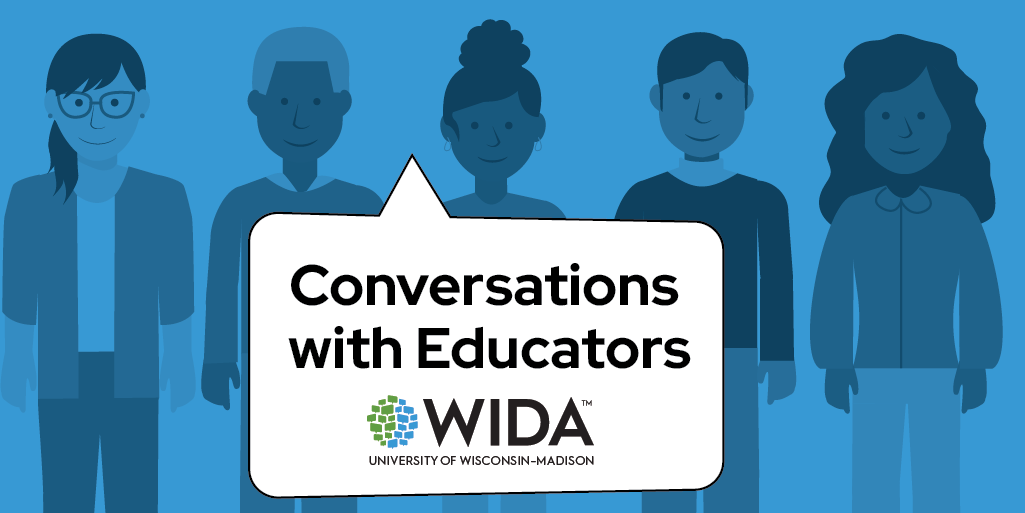Tamara Coburn on making assessment preparation a year-round process

Tamara Coburn has more than 20 years of experience in education. She’s worked as a content-area teacher and an ESL teacher. Tamara has dedicated her career to integrating language development strategies within content instruction. Along with WIDA researcher Jason Kemp, Tamara presented at the 2024 WIDA Annual Conference in a session titled, “ACCESS All Year: An Equity Approach to Language Assessment Prep.” She discusses that session and her tips for language assessment preparation in this edition of Featured Educator.
Can you explain what exactly language assessment prep is and what it entails?
Tamara Coburn: ACCESS for ELLs test prep, in its traditional sense, involves reviewing test demos and practice tests, but I advocate for embedding preparation into a year-long cycle of language development. The goal is to help multilingual learners (MLs) build ownership of their progress by integrating assessment-aligned tasks into routine instruction.
For instance, the Speaking test’s format—speaking into a microphone without immediate feedback—is markedly different from the interactive speaking opportunities in classrooms. To bridge this gap, I employ protocols like Microlabs, where students take turns responding to prompts within triads. I also envision Microlabs as a prototype for a more authentic ACCESS for ELLs Speaking test. These structured activities prepare students for the test and foster authentic discourse that supports inquiry-based learning. When we demystify assessment expectations and align instructional routines with those expectations, we transform the test into a meaningful measure of growth rather than an isolated event.
Why is language assessment prep important and why is an equity focused approach important?
TC: While ACCESS for ELLs is scaffolded and generally approachable for MLs, intentional preparation is also needed, such as practicing speaking and recording responses in environments that mirror the Speaking test format.
All students, particularly MLs, thrive when supported by routines and familiar practices. But speaking tasks akin to the test format only happen once a year. It’s inequitable to assess students in a mode that diverges significantly from how they engage in classroom speaking activities. Equity demands that we bridge this gap by embedding test-like speaking experiences into regular instruction.
Aligning classroom instruction with assessment formats creates equitable opportunities for MLs to access both academic and linguistic growth. Structured entry points into classroom discourse, paired with regular chances to record their voices, reduce anxiety and prepare students for the test. This equity-focused approach acknowledges that assessment readiness is not just about practice but about creating environments where all learners can authentically demonstrate their abilities.
What are some of the common challenges that educators face in preparing MLs for assessments? How do we address these?
TC: There are logistical, emotional and instructional challenges to preparing MLs for assessments. Some students no longer receive daily ESL services, limiting opportunities for educators specialized in ML education to engage with them. Student disengagement and feelings of defeat regarding the assessment can also be challenging.
Collective responsibility is key to addressing these challenges. By sharing data with colleagues—highlighting the impact of ACCESS for ELLs scores on school performance and accountability models—I’ve encouraged content teachers to integrate ML-specific strategies. For example, a science teacher might scaffold classroom discourse to align with WIDA’s Speaking Proficiency Level Descriptors, fostering confidence and competence, and a social studies teacher might use sentence strategies to check for understanding. This collaborative model underscores the shared responsibility of supporting MLs while demonstrating the interconnectedness of language development and content mastery.
Can you walk us through strategies that make language assessment prep more effective and engaging for students?
TC: I recommend embedding language-rich tasks into the instructional cycle. I leverage protocols like See-Think-Wonder to scaffold discourse, encouraging students to articulate observations and build upon their peers' ideas. At the sentence level, strategies from The Writing Revolution, such as “Because, But, So” prompts, help students practice cause-and-effect relationships within meaningful contexts, like historical or scientific phenomena.
These strategies serve dual purposes: they enhance students’ content knowledge while aligning with the language expectations of ACCESS for ELLs. If students struggle with sentence expansion, I might revisit the grammatical structures needed for more complex explanations. This approach integrates formative assessment, guiding instructional adjustments while ensuring language and content goals remain interconnected.
Learn more about formative classroom assessment in this article: Six steps to formative classroom assessment.
How do you ensure that language assessment prep supports ongoing language development rather than just test-taking skills?
TC: Rather than focusing narrowly on test-taking, I prioritize situating language tasks within authentic learning contexts. For example, my ESL lesson on expanding sentences capitalizes on what students learn in social studies about ancient civilizations. When in their content classes, those students can use those sentence strategies to summarize and explain key events. This reinforces both content understanding and the academic language skills measured by ACCESS for ELLs.
I view ACCESS for ELLs as a tool for evaluating ESL programming rather than the students themselves. By helping students set personalized goals, we connect their language development to tangible academic and personal outcomes. This mindset shifts the narrative from “studying for a test” to “developing the skills to access opportunities.”
What advice would you give to educators who are new to teaching MLs and are unsure how to incorporate year-round language assessment prep?
TC: As the lead ESL teacher for my district, I encountered teachers who were overwhelmed by implementing new strategies. The "start small, start now" philosophy became a cornerstone of my coaching. It encourages teachers to identify manageable entry points when adopting complex frameworks. Focus on daily opportunities for integrated language use: speaking, listening, reading, writing, and thinking. Collaborate with colleagues to share strategies and insights, using both formal PLCs and informal conversations. For instance, co-planning a unit around a shared topic can reveal natural points of intersection between language objectives and content goals.
Small steps matter. Starting with the QSSSA (Question, Signal, Stem, Share, Assess) strategy, which is really just a scaffolded turn and talk, can build confidence for both teachers and students. The signal encourages all students to think of a response, while the stem gives everyone a pathway to craft that response. Teachers get practice with providing thinking time while waiting on the signal and with attending to language development as they craft the stem. As comfort grows, these practices naturally expand to support broader instructional goals.





